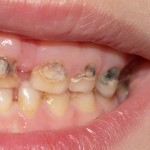
The 2019 Bangkok Declaration defined early childhood caries (ECC) as the presence of a primary tooth with one or more carious (non-cavitated or cavitated lesions), missing (due to caries), or filled surfaces in a child under the age of six years. While dental caries is a preventable chronic health problem it remains a significant public health challenge globally with an estimated 573 million children having untreated dental caries worldwide (Dental Elf – 9th Mar 2015).
The aim of this review was to estimate the global prevalence of early childhood caries using the WHO criteria.
Methods
Searches were conducted in the Medline/PubMed, Google Scholar, SciELO, and LILACS databases with no language restrictions. Cross-sectional or cohort studies using probability sampling and reporting the prevalence of caries in children under 71 months of age in urban or rural communities were considered. Two reviewers conducted the searches and updates and extracted the data independently. Risk of bias was assessed using the Hoy tool for prevalence studies (Hoy et al,2012).
Results
- 64 studies reporting on prevalence from 67 countries and 59,062 patients were included.
- The overall global and continental pooled prevalence are shown in the table below.
| Location | No. of Studies | Pooled Prevalence (95%CI) |
| Global | 64 | 48% (43% to 53%) |
| Africa | 7 | 30% (19% to 45%) |
| Americas | 27 | 48% (42% to 54%) |
| Asia | 27 | 52% (43% to 61%) |
| Europe | 5 | 43% (24% to 66%) |
| Oceania | 1 | 82% (73% to 89%) |
- Highest pooled prevalence reported in each continent is shown in the table below.
| Continent | Country | Pooled Prevalence (95%CI) |
| Africa | Uganda | 60% (56% to 64%) |
| Americas | Mexico | 75% (66% to 83%) |
| Asia | China | 89% (87% to 91%) |
| Europe | Lithuania | 88% (84% to 92%) |
| Oceania | Australia | 82% (73% to 89%) |
- Pooled prevalence by decade of publication is shown in the table below.
| Decade | No. of Studies | Pooled Prevalence (95%CI) |
| 1990s | 5 | 55% (31% to 76%) |
| 2000s | 25 | 45% (37% to 53%) |
| 2010 | 34 | 49% (42% to 55%) |
Conclusions
The authors concluded: –
Studies …….. show a combined prevalence of 48% [95% CI 43, 53], with variations both between and within countries. There were no significant changes observed in the reports for the period from 1990 to 2019. There were inadequate data to allow breakdown by age, and there is room for improvement in standardising data collection fields, reporting by including essential information, such as detailed prevalence by age, community type (rural/urban), and ethnicity.
Comments
This helpful review estimates that almost half of pre-school children have caries. Given that the included studies all use the WHO criteria ( the most widely used criteria) which only include cavitated lesions will underestimate caries levels. The authors also highlight that caries prevalence varied widely both between and across countries which may be a result of both structural and methodological consideration. Interestingly the included papers span a couple of decades and there appears to be little change in the prevalence over this period. As this data is likely to be an underestimate of caries prevalence it highlights the challenge that remains to prevent caries and promote oral health for all children and particularly the youngest.
Links
Primary Paper
Uribe SE, Innes N, Maldupa I. The global prevalence of early childhood caries: A systematic review with meta-analysis using the WHO diagnostic criteria. Int J Paediatr Dent. 2021 Mar 18. doi: 10.1111/ipd.12783. Epub ahead of print. PMID: 33735529.
Other references
Early Childhood Caries: IAPD Bangkok Declaration. Int J Paediatr Dent. 2019 May;29(3):384-386. doi: 10.1111/ipd.12490. PMID: 31099129.
Hoy D, Brooks P, Woolf A, Blyth F, March L, Bain C, Baker P, Smith E, Buchbinder R. Assessing risk of bias in prevalence studies: modification of an existing tool and evidence of interrater agreement. J Clin Epidemiol. 2012 Sep;65(9):934-9. doi: 10.1016/j.jclinepi.2011.11.014. Epub 2012 Jun 27. PMID: 22742910.
Dental Elf – 9th Mar 2015
